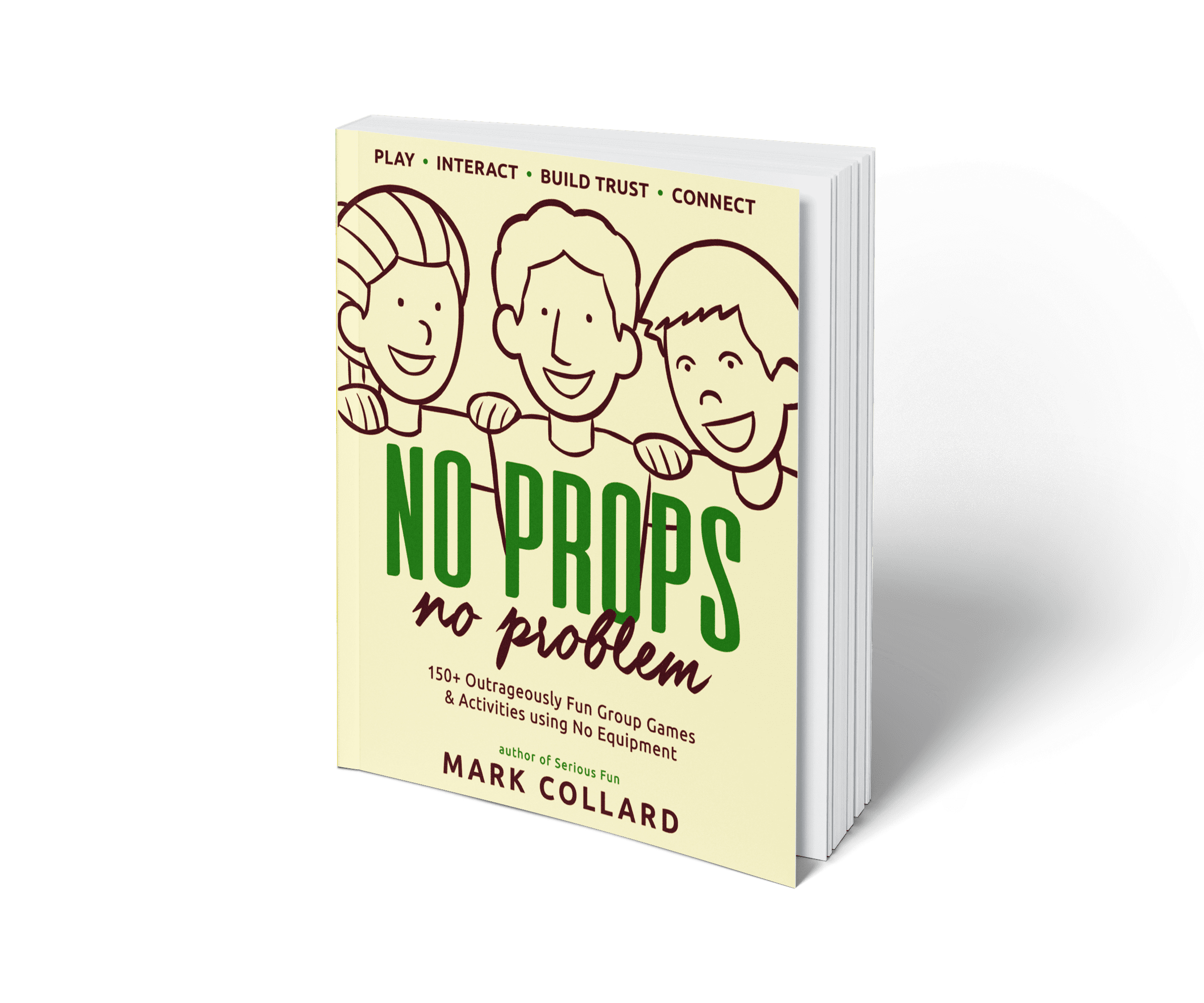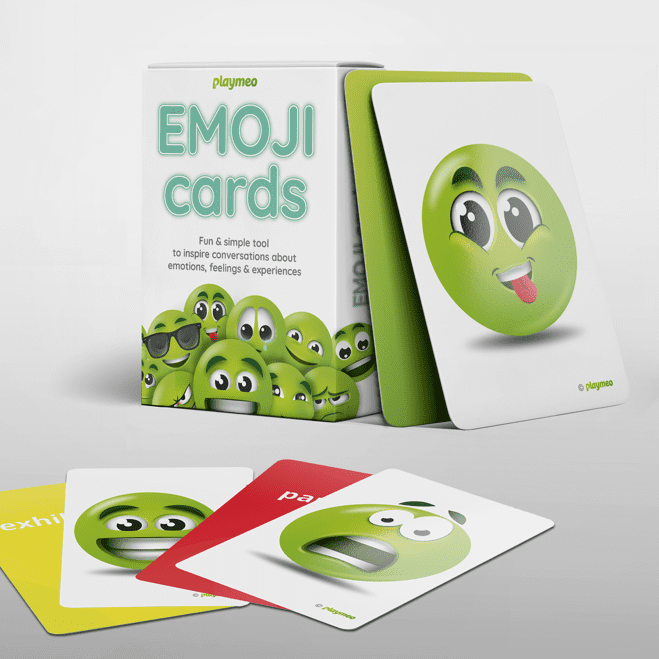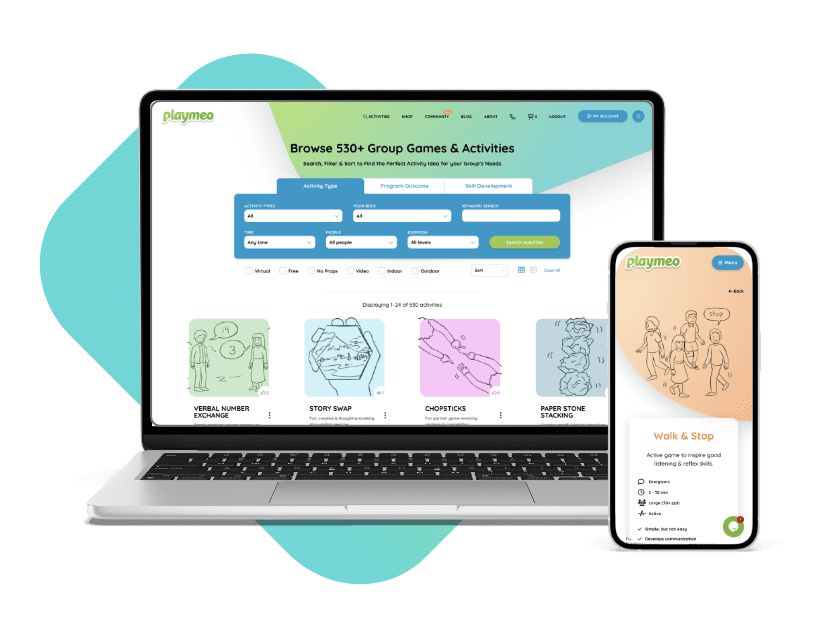I’ve just come off a lengthy Zoom call with a playmeo member who was seeking help with a familiar question:
What activities work with very large groups seated in very confined spaces?
To give this some context, it won’t be hard for many of you to imagine a large auditorium with a stage that looks out towards hundreds if not thousands of people, most of whom are unenthusiastic about interacting and/or are unable to move about because of the furniture.
I can picture myself in these spaces a lot. I expect you can relate, too.
My response to the question was divided into two parts – general guidance and specific activities. I hope you find these tips & strategies useful, too.
Guidance: Working with Large Groups
Be Gentle
Let’s be honest, most people sitting in the auditorium of a conference are silently hoping that no one asks them to do anything. No interaction, no chitty-chat, no physical activity. So it is critical that you acknowledge this inertia and build it into the design of your opening. Tell a story to make people laugh, loosen up. If you’re building up to an exercise that involves some level of vulnerability, ease into it slowly lest you scare people away. Start with really simple interactions that perhaps only involve the individual and focus on those activities that will be successful no matter how many people participate.
Sequence Your Activities
This should be a no-brainer, but sadly, when I look around at some of the auditoriums I sit in sometimes, it is evidently not. Let’s say one of the exercises you want to present involves people holding hands in a circle. Don’t start there. Begin with one or a series of activities that, first, introduce lots of ‘safe’ touches such as a high-5 or a fist-bump. Or, if your presentation relies heavily on people sharing some ‘mission critical’ content, be sure to start with fun stuff first and gradually build up the significance.
Focus on Pairs
This is my go-to favourite strategy for working with large groups. Break them into pairs. As I often say, it’s very hard to be left out of a pair, so engagement is pretty much built into the exercise. Not to mention, people feel more comfortable interacting with just one other, even if they don’t know them very well. And of course, the kicker, breaking your group into pairs immediately raises the level of participation and energy and momentum in the room. And it’s much easier to calm a group down (that is exhibiting too much energy) than it is to build it up when it is not present.
Specific Activities that Work in Tight Spaces
Here are a small number of the activities we discussed, presented below in no particular order (and you know this is important, right?)
All of them form part of my ever-expanding suite of favourite, go-to almost fail-proof activities that just work with large groups especially if they’re sitting down and can’t move much.
- Gotcha – classic partner game with multiple variations. I’ve been using it for more than 40 years with success. Never gets old.
- One Two Three – this game sits somewhere in my list of Top 60 activities 🙂 I love it, every group I present it to loves it. If people can stand up, then play is possible.
- Ice-Breaker Question Exchange – again, so many variations and sequencing is built in because you can craft a series of gradually more difficult/deeper questions as your presentation progresses.
- Story of Your Name – this is the dark horse of this list. So simple, yet so powerful when framed appropriately. I’ve never known it to fail when I’ve crafted the right intro.
- Clapping Game – this is a frequent go-to I pull out when I want my group’s attention (and favour) really quickly. No words are necessary, just a very clear, crisp and fun series of claps. Try it today, I think you’ll like it. If you’re not sure, check out the video embedded in the activity description.
Of course, I have many dozens of favourite large group/auditorium style activities up my sleeve. If you’d like to add more to your repertoire, then please ask.
What are your favourite activities to present to large groups in conference? Share your ideas in the Comments below…

No Props? No Problem!
Get 150+ no-prop games & activities + exclusive 30-day free trial of playmeo. Scan QR codes to view activity videos, leadership tips, etc.

EMOJI Feeling Cards
50+ cards that portray a range of emotions from happy, sad, angry & confused. Ideal for building emotional literacy skills.

Wow, you’ve been busy!
You can open 1 more
activity for free.
Limit resets every 24 hours
or click below to get unlimited access.











Great note, thanks.